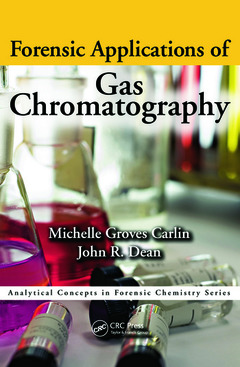Description
Forensic Applications of Gas Chromatography
Analytical Concepts in Forensic Chemistry Series
Authors: Groves Carlin Michelle, Dean John Richard
Language: English
Subjects for Forensic Applications of Gas Chromatography:
Keywords
Ignitable Liquids; SPE Cartridge; gas chromatography; Solid Phase Extraction; Typical Operating Temperature Range; Fire Debris; GC; Da Nc; Flame Photometric Detector7; PDMS Fibre; Theoretical Plates; Resultant Chromatogram; DB-5 MS; Tic Mode; Ich Guideline Q2; GC MS System; Carrier Gas Flow Rate; Tic; Ghost Peaks; GC Column; Gas Supply Pressure; GC Run; Split Peaks; Colloidal Anhydrous Silica; Ta Te; Squat Peak
83.43 €
In Print (Delivery period: 15 days).
Add to cartPublication date: 06-2013
Support: Print on demand
214.69 €
In Print (Delivery period: 14 days).
Add to cartPublication date: 09-2017
· 15.6x23.4 cm · Hardback
Description
/li>Contents
/li>Readership
/li>Biography
/li>
Several areas of forensic science use the technique of gas chromatography, ranging from fire analysis to the investigation of fraudulent food and perfumes. Covering the essentials of this powerful analytical technique, Forensic Applications of Gas Chromatography explains the theory and shows applications of this knowledge to various realms of forensic science.
Topics include:
A brief introduction to gas chromatography and its use in forensic science
Various components that make up the gas chromatographic instrumentation
The theory of the separation process, along with the chemistry underpinning the process
Method development, with a specific example of a separation of eight different compounds using a gas chromatography-flame ionization detector
Quality assurance and method validation with information applicable to many types of analytical testing laboratories
Troubleshooting in gas chromatography systems
New developments in gas chromatography and advances in columns and detectors
Real examples supplement the text, along with questions in each chapter. The book includes examples of applications of gas chromatography in drugs, toxicology, fire, paint, food, and fragrance. Each application is presented as an individual case study with specific focus on a particular sample preparation technique. This allows each technique to be discussed with respect to its theory, instrumentation, solvent selection, and function, as appropriate. Each case study provides readers with suitable practical information to allow them to perform experiments in their own laboratory either as part of a practical laboratory class or in a research context. The final chapter provides answers to the questions and encourages further study and discussion.
These books may interest you

Gas Chromatography 220.63 €



